The Story Of The Darth Maul Game That Never Came To Be
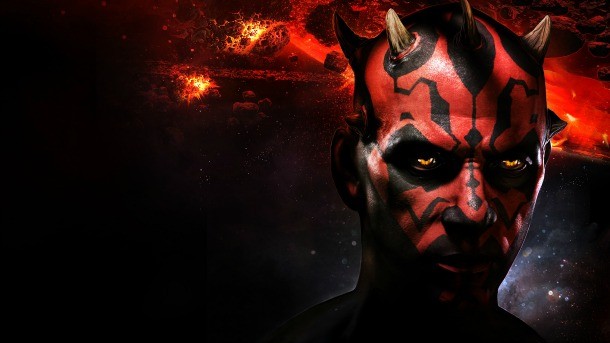
[This feature originally appeared in Game Informer issue #253, but we're repromoting it today with rumblings that the developer still wants it to happen. You can also find video and art from the canceled Darth Maul game by following the links]
Fear. Anger. Hate. Suffering. This is the transformative experience Austin-based developer Red Fly Studio was hoping to deliver when they were commissioned by LucasArts to create a game starring Darth Maul, the popular Sith Lord who debuted in Star Wars: Episode 1 – The Phantom Menace.
The studio envisioned a dark coming-of-age tale, showing a young Maul forced against his will into the Sith hierarchy. “We wanted people to see him as a kid kidnapped by emperor Palpatine and tortured – physically, mentally, and emotionally – becoming this powerful Sith Lord,” says a developer who worked on the project but wishes to remain anonymous. “You got angry, you got frustrated, and you made the same mistakes he did. No one has ever seen Sith training up close. No one has ever seen how to construct a Sith from kid to adult. We’ve only seen the five-second turn: Anakin Skywalker cries a little bit, and then he’s evil.”
In all six Star Wars films, Palpatine plays the role of a shadowy -puppeteer, manipulating people into strategic positions for his personal gain. Red Fly’s pitch would have given gamers a close look at his dark schemes and the role Maul played in them. As the plot progressed, the relationship between master and apprentice would have eroded to the point of Maul raising his double-sided saber – which you, the player, helped him construct – against Palpatine.
“You want to fight him, and of course that’s what he wants,” recalls the developer. “Our story basically bookended at the end of The Phantom Menace with Maul’s death. We felt [this story] would be a really solid, large game, maybe two games.”
Red Fly was never given the chance to pitch this vision to LucasArts, but their time with the Sith Lord didn’t end there. The project was injected with a new vision, not once but twice – one idea coming from the Clone Wars animated series, and another from George Lucas, who proposed a crazy idea that took everyone by surprise, and would have shattered the temporal fabric of the Star Wars universe had it seen the light of day.
Red Fly’s team was taken on a rocky journey, starting with the hope that their unknown studio could make an impact with one of the world’s most beloved franchises, and ending with LucasArts applying a proverbial Force choke suffered by many hopeful developers who believed they had great Star Wars stories to tell.
Coming Up Next: Red Fly Proves their worth...
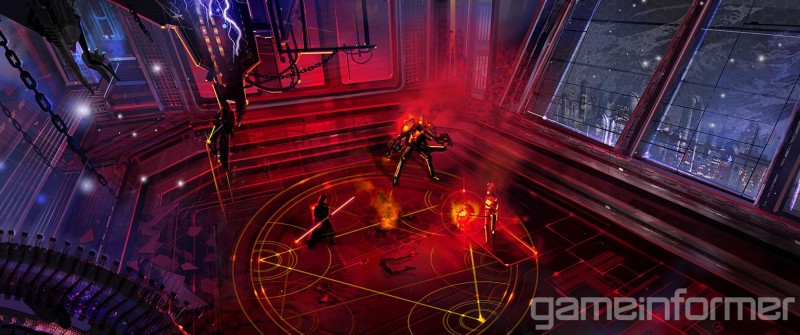
PROVING ITS WORTH
Prior to working with LucasArts, Red Fly Studio’s portfolio consisted of just three Wii games: Mushroom Men: The Spore Wars, Food Network: Cook or Be Cooked, and the cartoony port of Ghostbusters: The Video Game (which Red Fly also brought to PlayStation 2).
In early 2010, LucasArts was at a crossroads with the Wii port of Force Unleashed II. Developer Krome Studios handled the Wii version of the first Force Unleashed, and although it sold well, LucasArts was not happy with its quality. Rather than sticking with Krome, LucasArts started looking for another partner.
“Not on purpose, we carved out that we were the Wii guys,” says Red Fly CEO Dan Borth. “They wanted [the Wii port of Force Unleashed II] to be better, but didn’t know what to do really. We built a demo in two weeks with little assistance from LucasArts. Neil Garrett, their head of external production, thought we should do it.”
With a development team of roughly 50 people, Red Fly began working with LucasArts’ internal Force Unleashed II team, but with only nine months between the port’s start date and its proposed release date, the process wasn’t moving fast enough for Borth and his team. Red Fly wasn’t getting art assets from LucasArts when they needed them. Due to the time constraint, Red Fly codenamed its game “Swift.”
“The project moved quickly – way too fast for LucasArts to give us art assets in a timely manner,” says Borth. “So we built almost everything from scratch.”
Despite taking on an immense amount of work, Red Fly shipped its version of Force Unleashed II on time. The Wii version netted
a Metacritic review score of 71 next to the PlayStation 3’s 63, Xbox 360’s 61, and PC’s 59.
Although LucasArts ultimately viewed Force Unleashed II as a failure, Red Fly’s involvement in the project was a success. “They kind of kept us on the hook,” Borth recalls. “They told us Force Unleashed III was coming, and there were some rumors we might actually get the next-gen versions to prove ourselves worthy, but they just kind of dismissed us as, ‘You are just the Wii guys. You can’t do that.’ When publishers look at you, you have to fit into their wheelhouse or you don’t get the job.”
Nintendo and LucasArts discussed bringing a new intellectual property to either 3DS, Wii, or, at the time, the forthcoming Wii U. The negotiations eventually landed on the Darth Maul project, and LucasArts president Paul Meegan knew exactly who to tap for it.
“I got a call from Paul, and he asked me if I would be interested in making a Darth Maul game,” Borth says. “I was like ‘Yes, of course, of course.’ They signed us to a contract that was basically, ‘You guys start working on ideas, start working on demos, start working on mechanics.’ It wasn’t really a game contract; it was more like a work-for-hire, month-to-month thing. We started to flesh out our ideas and content and stuff like that. I think after about three or four months we entered into the game contract. It got intimate pretty quick.”
While Borth wouldn’t go into the specifics of the project, other sources that worked on the game confirmed this was the point that the studio dreamed up the origin story of Maul’s transformation into a Sith Lord.
Coming Up Next: Prototyping takes shape...
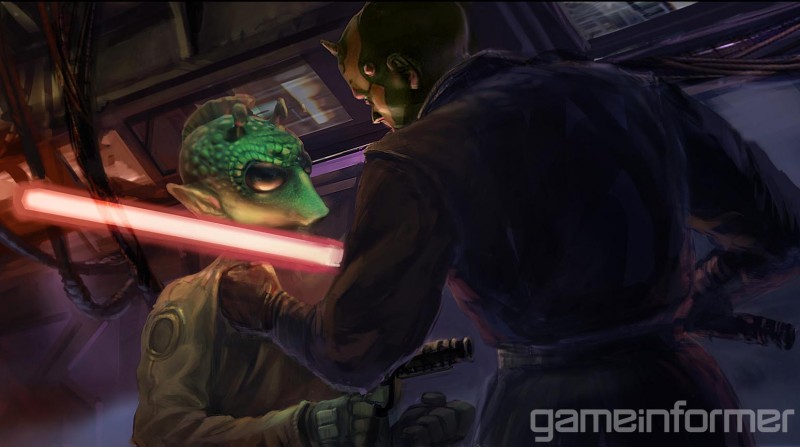
RETCON DEATH
Prototyping began on October 9, 2010 under the internal codename “Damage.” LucasArts’ working title was simply “Maul.” Unbeknownst to Red Fly, Lucasfilm had big plans for the red and black tattooed Sith Lord within the Clone Wars animated show.
LucasArts didn’t provide much direction to Red Fly at the time, but promised that key talent would be brought into the fold to help with the Star Wars lore and general direction of the fiction. Only odd little Darth Maul tidbits were discussed with Red Fly.
“We were told Maul survived his encounter with Obi-Wan Kenobi in The Phantom Menace,” says a former Red Fly team member who wishes to remain nameless. “We fashioned robotic legs on Maul after being told he had them. Then we were told he had a brother named Savage Opress. He was supposedly green. Again, we were not told of the Clone Wars storyline at this time.”
From these puzzling elements, Red Fly knew it was unlikely it would be telling Darth Maul’s origin story, or any tale predating the end of The Phantom Menace. Red Fly’s game was starting to look more like an extension of the Clone Wars cartoon universe.
The team also learned that LucasArts’ negotiations to bring the Darth Maul project exclusively to a Nintendo platform had fallen through – due largely to Nintendo not meeting financial demands to make it a first-party project. LucasArts decided to shift development to PlayStation 3, Xbox 360, PC, and Wii U.
Concern of not having a clear vision swept over the development team. “It was tough because we didn’t have any information,” remembers a developer. “They didn’t want to share it. They didn’t want to leak any Clone Wars stuff. We were like, ‘Good God, are we doing this or not?’”
One of the few things LucasArts gave the team to go on for a couple of months was the tagline [and potential name] “Battle of the Sith Lords.”
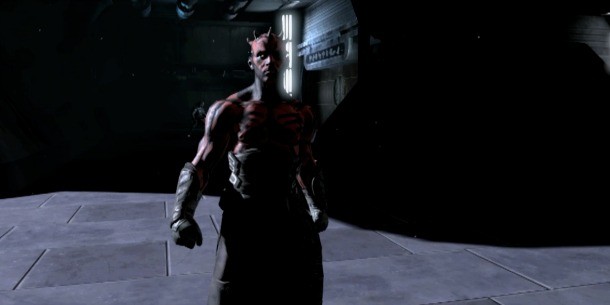
“We were kind of fumbling around in the dark in terms of lore, so we just started making a game instead, which was kind of fun,” recalls another anonymous ex-Red Fly employee. “The initial plan was to explore making a stealth game that was action-centric. So instead of a stop-and-wait game like Thief, it was more forward stealth, like kill that person before they can actually alert someone, then disappear into the rafters. We also started developing the concept of Maul as a glass cannon. Taking our cues from Arkham Asylum, you are insanely -powerful and deadly, but one or two hits will take you out.”
Although Red Fly was only given two weeks to prototype Force Unleashed II for Wii, the team spent months working on prototypes for the Darth Maul game. Gameplay systems and art direction were all coming online. Maul’s animations were getting there: He could quickly vault over obstacles in the environment, and was starting to move as fluidly as his movie counterpart.
A core team of Red Fly employees traveled with their prototype to LucasArts to discuss the next steps. They met with LucasArts creative director Clint Hocking and designer Kent Hudson. One anonymous source close to the talks remembers the takeaway: “We discussed ways to make the core gameplay loop compelling,” he says. “We said Darth Maul’s connection to the Force was through generating fear. The idea was to f--- with the A.I., and generate fear to build up your ability to use the Force, execute stealth kills, and manipulate the environment. It was exciting, cool stuff. Later on, we learned this was probably a little bit of a misstep.”
On a different trip, other Red Fly representatives met with key members of the Clone Wars animated team at LucasFilm’s Big Rock Ranch, adjacent to the famous Skywalker Ranch. Here the team gained some clarity for Darth Maul’s future, but not necessarily their game.
“We were told that after The Phantom Menace, Maul ended up in a trash compactor, went crazy, and assembled a spider body for himself out of junk,” recalls the former Red Fly staffer. “So we were going, ‘Oh God, we have to put a robotic spider body on f---ing Darth Maul! What the hell!’”
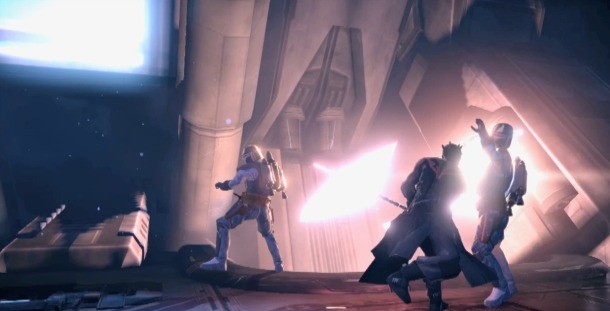
Thankfully for the development team, Maul didn’t keep his spider legs for long. Red Fly’s original guess of him having somewhat normal robotic legs proved to be accurate.
The more Red Fly learned about Clone Wars’ Darth Maul story, the more the team wanted to distance itself from it. Hopes of potentially returning to the origin story idea swirled throughout the office. At the same time, LucasArts had informed Red Fly that George Lucas was fond of Darth Talon, a female Lethan Twi’lek who debuted in Dark Horse Comics’ Legacy era stories, and served under Darth Krayt. Rumor had it Lucas might want to get her into the game somehow. He always had a personal interest in the project, but Red Fly didn’t know what he envisioned for it.
The amount of confusion in the air made Red Fly feel handcuffed. A developer remembers the frustration well: “LucasArts said, ‘There is a lot of crosstalk going on, misinformation. Let’s actually sit down and have you guys talk to George.’”
Coming Up Next: George Lucas takes control...

MEETING WITH THE CREATOR
A Red Fly contingent traveled to LucasArts, first meeting with Paul Meegan*, studio creative director Frederic Markus, and Lucasfilm president and COO Micheline Chau. The developers weren’t prepared for the questions that came next.
A source with knowledge of the meeting says they were asked, “What’s your X statement? How do you sum this game up?”
The team tried to outline the game’s strengths, features, and overall design, but they were cut off. Lucas’ representatives said “Nope.” They recognized that there was something special about the game, but it lacked a cohesive whole, and Red Fly agreed that they hadn’t gotten there yet.
A large reason for this was the lack of direction from LucasArts. “For the entire next week, [the team] worked at LucasArts on unifying a vision and coming up with an X statement,” says the source. Meegan and Markus took active roles in the project, helping cement its vision. “Fred and Paul were very demanding, but in a good way. They wanted the best out of our people. We learned a lot from them.”
The next day, Red Fly finally met with George Lucas, but not before being told how to talk to him. Our source says they were told to never say “No” to him, or to say, “Yeah, that will be easy.” They were also told not to mention Force Unleashed’s protagonist, Starkiller. If he’s referred to by George, it will be “that guy.” The most important rule, much like not feeding a Mogwai after midnight, was “Don’t tell George how the Force works.”
Red Fly’s representatives arrived at the meeting point early the next day, only to find LucasArts employees rushing Force Unleashed artwork out of the conference room, and replacing it with other Star Wars artworks, including the placement of Sideshow Collectibles statues of Darth Maul and Darth Talon to the table.
A friendly George Lucas entered the room and was eager to hear the pitch from Red Fly’s creatives. “Before they could finish their spiel, Lucas cut them off, stood up, walked over to the statues, rotated them to be facing the same direction, pushed them together, and said ‘They’re friends!’” adds the source. “He wanted these characters to be friends, and to play off of each other. He talked about the show Burn Notice as a reference point. He likened Darth Maul to Sonny from The Godfather, and he likened Darth Talon to Lauren Bacall. He actually did an impersonation of her. It was supposedly the weirdest impersonation of a ’40s actress going, ‘Don’t you know how to whistle? Put your lips together and blow.’”
The problem with the idea of Maul and Talon teaming up for a buddy cop-like experience was that they were separated by over 170 years of Star Wars fiction – as ridiculous of an idea as Frédéric Chopin forming a band with Dave Grohl. When this vast time divide was brought up to Lucas’ attention, he brushed off the notion of it not working, and said that it could instead be a descendant of Darth Maul or a clone of him.
An ex-Red Fly employee says Lucas focused heavily on the player dictating the narrative. “He wanted the kind of experience where the player could tell the game what type of story they wanted,” he said. “It wasn’t so much choose-your-own-adventure; it was more of a player being able to act as director, letting the game still respond and react to the player’s wishes and surprising the player with new experiences that maybe they didn’t expect. Clearly this was not the forward stealth game for Darth Maul anymore.”
The Red Fly team left the meeting, which ran for roughly three hours, dumbfounded by the new direction. They spent a few more days at LucasArts’ campus working closely with its team to determine how to get this new idea to work.
Coming Up Next: Melding time...
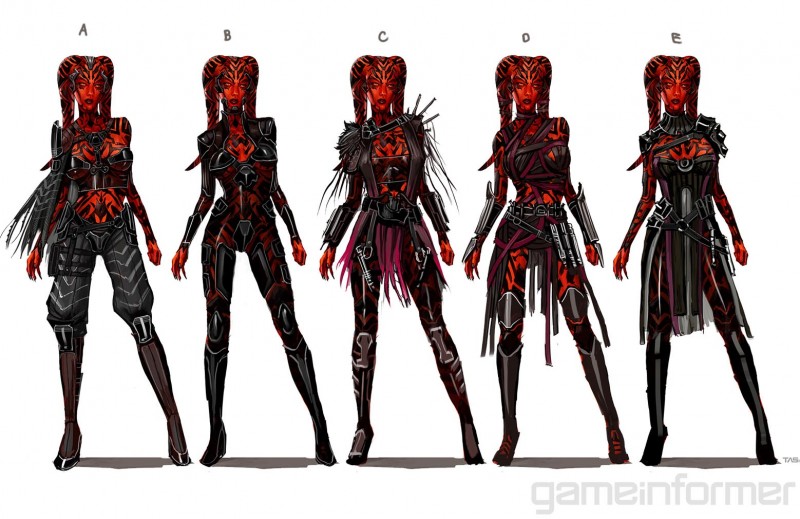
THE NEW DIRECTION
Red Fly Studio did its best to adapt to the new story, which pitted Darth Maul and Darth Talon against Darth Krayt and his Sith army.
A developer close to the story discussions remembers, “If we were going that route, the heir of Maul had to be a secret. He could be trained by the ghost of Maul himself in the ways of the Sith, and wait until it was time to ‘strike back’ at the Sith for polluting the rule of Two: One Master, One Apprentice. We wanted to go with that. It was up to Maul’s heir to return the Sith to the balance of two – and of course have Talon be focused into it. We felt this was the best [story] we could make out of the ingredients we were given. We never got to hear if Lucas liked this story or the direction we were going.”
Over the next couple of months, Red Fly manufactured numerous prototypes, sometimes daily prototypes. LucasArts’ Frederic Markus believed that the game needed a sophisticated laser deflection mechanic.
“We had this Arkham mechanic with lightsabers, and he wanted us to come up with a mechanic that would allow the player to deflect incoming laser fire, which is not that difficult,” remembers a former Red Fly developer. “But at the same time, we had to direct it back, and control it while not breaking combat or using time dilation. That was quite a feat. We almost cracked it, and we came up with something that was kind of a hybrid and almost workable, but we really didn’t feel like deflection was a Maul trait. Maul is just about attack. Attack, attack, attack, attack. We had heads flying everywhere.”
Despite the great effort in developing proof of concept, LucasArts wouldn’t sign off on any of the big-ticket items that would allow development to truly get underway. Red Fly’s staff was up to roughly 80 people at this point, and the team was churning out -content for a game that had no clear direction.
Five full-time concept artists designed new Stormtroopers, Sith, and Jedi adversaries for Maul and Talon to square off against, and an extensive collection of worlds for the duo to traverse.
Seen in numerous concept art pieces obtained by Game Informer, the team hoped to weave in the Black Sun criminal syndicate. Many of these illustrations show well-known Star Wars species decked out in black trench coats and cloaks, with heavy artillery in hand and holstered.
Some of the proposed characters include a lanky, four-armed alien named Darth Inexor, a regal and darkly attired Darth Kroan (who appears to have suffered a nose injury judging by the permanent prosthetic strapped to his face) and a stunning female Jedi adorned head-to-toe in white and black, almost looking like a mime you’d see bothering people on city streets.
Some of the pitched locations fit within the context of Star Wars as we know it, showing familiar-looking vessels docked in hanger bays, and merchants lined up along a street that looks like a dead ringer for Tatooine’s Mos Espa. Most of the locations, however, speak of a team trying to bring new and exciting destinations to Star Wars fans. Much like the God of War stages taking place on titans, many of these environments wouldn’t have been stationary, or even stable. One such example is an ocean-based city that is pulled across the surface by gigantic eels. This idea also extended to land, and is seen in several art pieces showing cities fastened onto the backs of enormous, slow-moving -lizards. In one location, the team drew inspiration from the film Pitch Black, taking Maul to an uninhabitable world’s surface, scorched by the sun. The citizens live within the shadowed cracks, and only dare visit the surface once the sun sets.
Prototyping continued with these ideas in mind, and a vision for how the game could potentially come together was within sight, but remained blurry. “We had the idea that Talon would be a reflection of the player character in many ways, and would respond to what the player was doing as Maul,” says a former source from the team. “We had a bunch of prototypes for different storytelling techniques whereby you could start nudging the scene toward a Talon approach or a Darth Maul approach. We had characters that could take any number of weird situational inputs and could query the world for things, and then make a response that seemed to make sense. But I think there were still people that were in love with the idea of Darth Maul using fear as his root to the Force. It started shooting out in too many different directions at once, unfortunately, and we had a lot of people – we should have trimmed that down to probably 10 or 15.”
Coming Up Next: Termination...
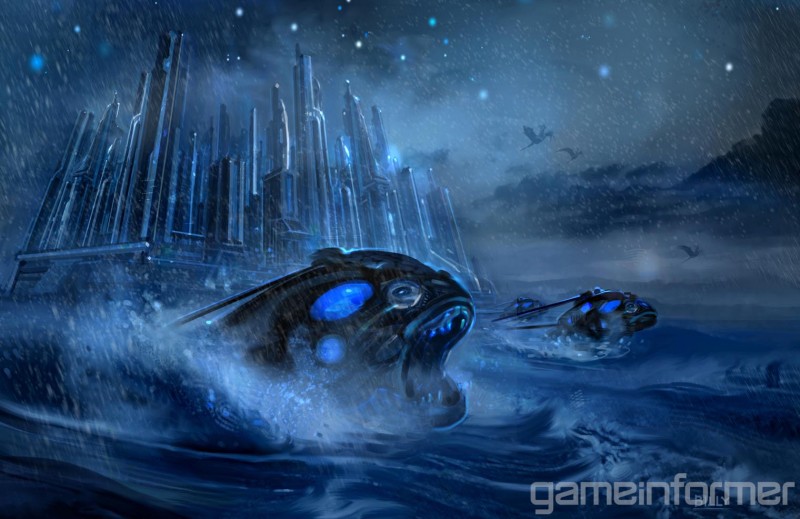
AN UNEXPECTED END
Knowing the project could use more guidance, LucasArts flew a large number of Red Fly’s developers to San Francisco for a boot camp to help with the prototypes. “We went to LucasArts’ campus every day and prototyped with Frederic,” a developer says. “We learned a lot, did some good work, went back to Austin, but weren’t really able to execute on it.”
With significant movement forward, LucasArts thought the team was ready to make the game. LucasArts also floated the idea that Red Fly could be purchased and folded in as a subsidiary studio.
Red Fly was in a good position, but without warning, LucasArts stopped communicating with the team.
“We didn’t hear from them for two weeks,” an ex-Red Fly employee remembers. “Two and a half weeks. No word. Nothing. And when I say no word, I mean nothing. We tried to contact them over and over and over again. We know how slow they move, and we’ve seen them do this before. We were at least hopeful. But still no word came. We did manage to get some of the guys, the internal producers that were on our project, on Skype, and they looked like they were kicked in the nuts. We knew what was going on. They just couldn’t tell us. But we didn’t know the extent of what was going on. We thought, ‘Okay, they’re not going to buy us. Fine.’ We didn’t know the game would get canceled.”
On June 24, 2011, Red Fly’s executives received an email with the subject line “Maul Termination Letter.” The future of Red Fly was in jeopardy.
The game was dead. Worse yet, without LucasArts funding the project, the studio wouldn’t survive.
“Despite the project being canceled, LucasArts treated us very well afterwards,” says Red Fly’s Dan Borth. “While it was a struggle, they gave us the ability to continue operating.”
The studio’s doors remained open (and work on new, unknown game projects continues today), but it suffered a massive downsizing, leading to 70 percent of the workforce let go.
Numerous ex-Red Fly staffers believe the cancelation didn’t come from the quality or lack thereof in their prototypes, but George Lucas’ decision to sell his company to Disney. “It’s the only thing that makes any sense,” says a former Red Fly employee. “Everything needed to be put on ice.”
“A lot of good people on both sides really put their hearts into it,” Borth says. “We certainly wish things would have gone differently.”
To see the Darth Maul game in action, check out our video feature. For more a comprehensive look at LucasArts' inner turmoil, read our in-depth feature, Fall Of The Empire.

Get the Game Informer Print Edition!
Explore your favorite games in premium print format, delivered to your door.
- 10 issues per year
- Only $4.80 per issue
- Full digital magazine archive access
- Since 1991









